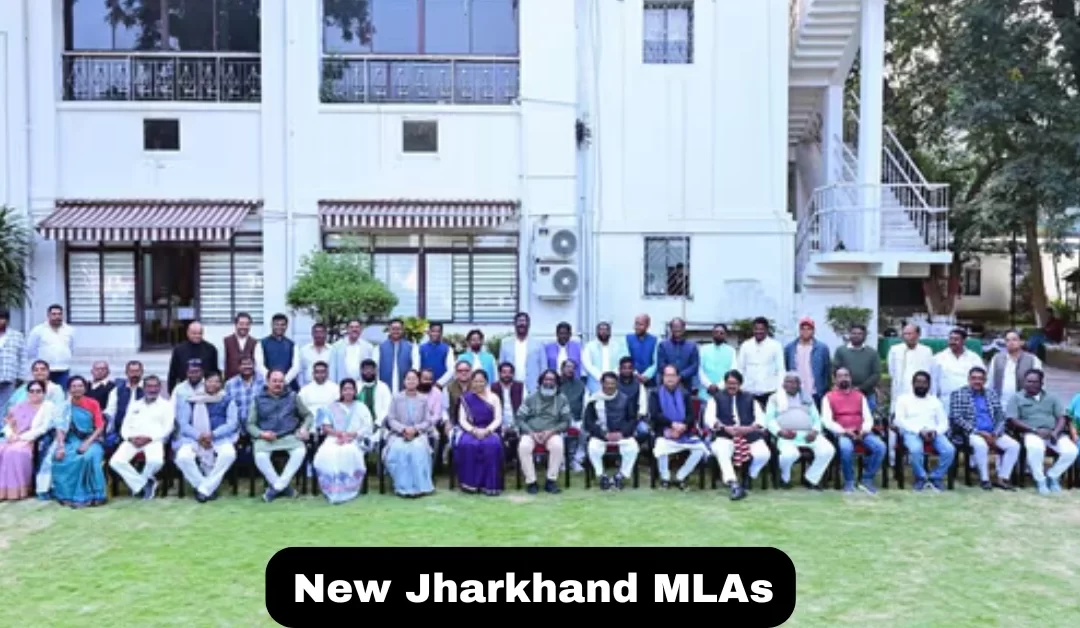A recent report by the Jharkhand Election Watch and the Association for Democratic Reforms (ADR) reveals that a staggering 89% of the newly elected Members of the Legislative Assembly (MLAs) in Jharkhand are crorepatis. This analysis, based on the election affidavits of 80 out of 81 winning candidates in 2024, provides a deeper insight into the wealth distribution among the state’s lawmakers.
Key Findings on Crorepati MLAs
- Majority of MLAs Are Crorepatis Out of the 80 winning candidates analyzed, 71 MLAs have declared assets exceeding ₹1 crore. This marks a significant increase compared to previous elections. For reference:
- In 2019, 56 MLAs were crorepatis.
- In 2014, the number stood at 41 MLAs.
This indicates a steady rise in the wealth of elected representatives over the last decade.
- Parties with the Highest Number of Wealthy MLAs The report breaks down the distribution of crorepati MLAs across political parties:
- Jharkhand Mukti Morcha (JMM): 28 MLAs
- Bharatiya Janata Party (BJP): 20 MLAs
- Indian National Congress (INC): 14 MLAs
- Rashtriya Janata Dal (RJD): 4 MLAs
- Other parties, including CPI(ML) Liberation, LJP (Ram Vilas), JD(U), and AJSU Party, account for the remaining MLAs.
This trend highlights that the phenomenon of wealthy representatives spans across all major political parties.
- Richest MLAs in Jharkhand Among the newly elected MLAs, some stand out for their exceptional wealth:
- Rameshwar Oraon (Congress): Representing the Lohardaga constituency, he tops the list with declared assets worth ₹42.20 crore.
- Kushwaha Shashi Bhushan Mehta (BJP): From the Panki constituency, he comes in second with assets worth ₹32.15 crore.
- Sanjay Prasad Yadav (RJD): From the Godda constituency, he is third with ₹29.59 crore in assets.
At the other end of the spectrum, Jairam Kumar Mahato (JLKM), who won the Dumri seat, reported the lowest declared assets at just ₹2.55 lakh.
Trends in Asset Growth
The report also highlights a substantial increase in the wealth of many MLAs over the last five years. On average, the assets of 42 re-elected MLAs grew by ₹2.71 crore during this period. This raises questions about the sources of wealth accumulation and its implications for governance.
Educational Background of MLAs
The educational qualifications of the MLAs vary widely:
- 28 MLAs have completed education between Class 8 and Class 12.
- 50 MLAs are graduates or hold higher degrees.
- One MLA is a diploma holder, and another identified as “literate.”
This diverse educational background reflects the range of experiences and expertise brought to the state assembly.
Liabilities Among MLAs
In addition to their significant assets, 14 MLAs have declared liabilities exceeding ₹1 crore. This aspect of financial declarations underscores the complexity of wealth management among public representatives.
Key Insights and Implications
- Rise in Wealth Concentration: The consistent increase in the number of crorepati MLAs over the years raises questions about the growing influence of wealth in politics.
- Transparency and Accountability: While the affidavits provide transparency, they also highlight the need for accountability regarding the sources of wealth.
- Impact on Governance: The concentration of wealth among legislators could influence decision-making processes, potentially prioritizing elite interests over grassroots issues.































